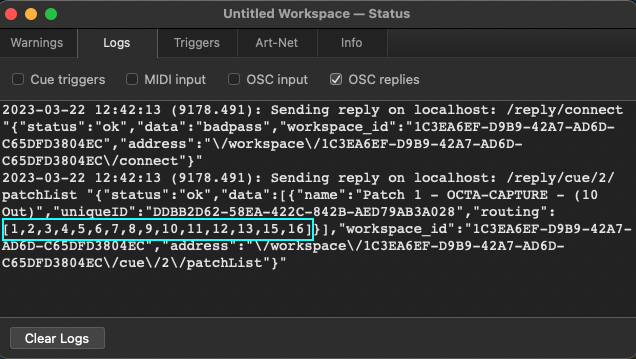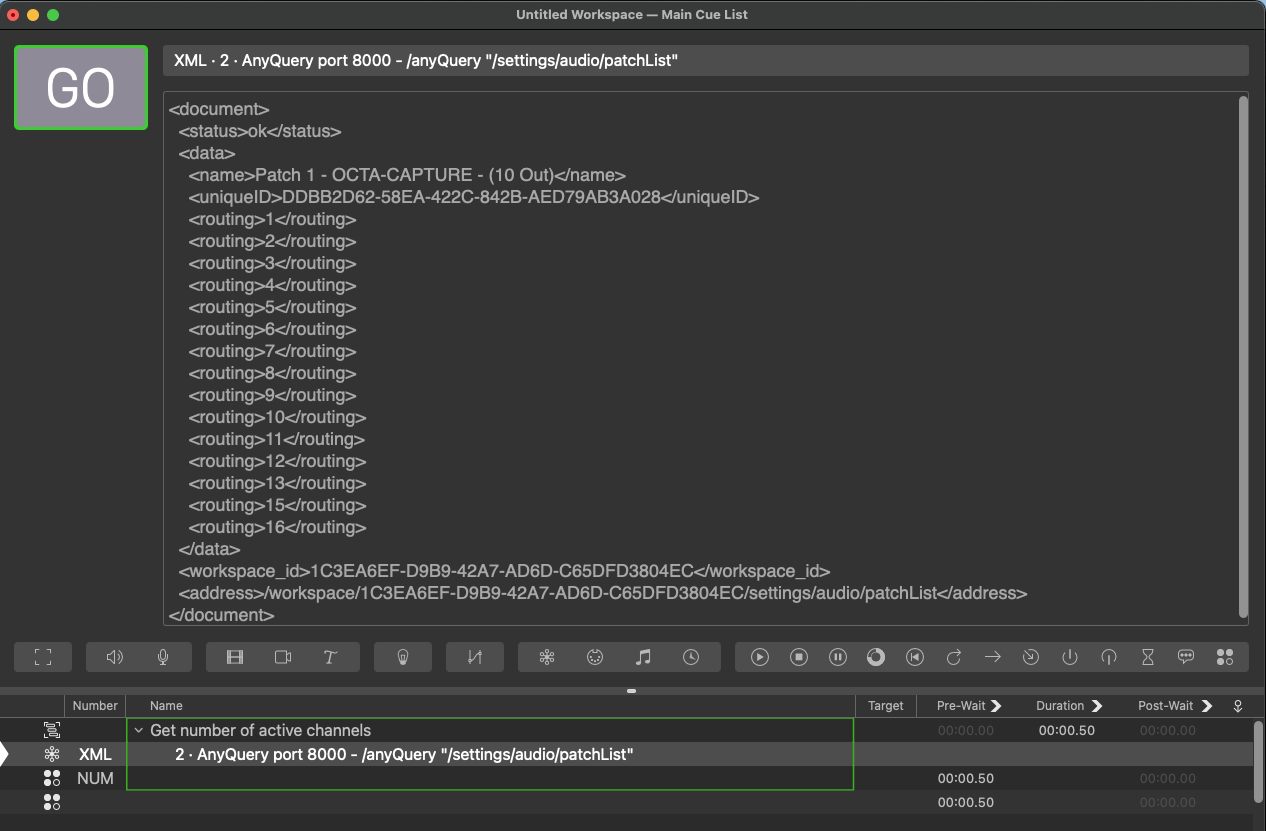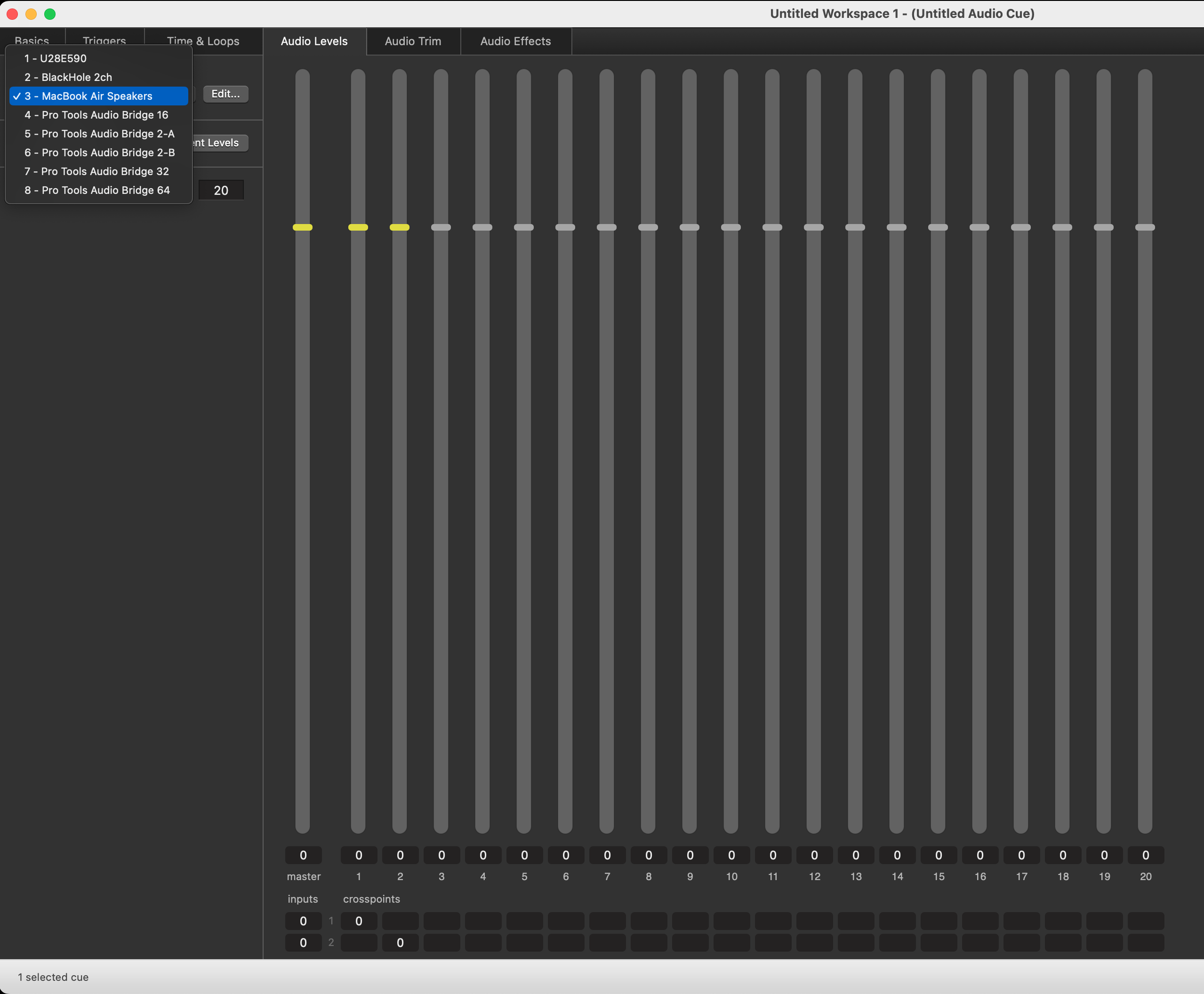audio outputs
Kalman Tarr
I have a simple question.
How to find out how many valid audio outputs have qlab.
Basically two on main board.
But, if I connected an external audio card with 16 outputs. Summarized it is 18. I found the next in OSC dictonary.

Or something escaped my attention.
Thanks in advence for your help.
Sam Kusnetz
--
Contact support anytime: sup...@figure53.com
Follow QLab on Twitter: https://twitter.com/QLabApp
User Group Code of Conduct: https://qlab.app/code-of-conduct/
---
You received this message because you are subscribed to the Google Groups "QLab" group.
To unsubscribe from this group and stop receiving emails from it, send an email to qlab+uns...@googlegroups.com.
To view this discussion on the web visit https://groups.google.com/d/msgid/qlab/5fe1dcd1-36cd-49ec-9120-285a4656a67en%40googlegroups.com.

Kalman Tarr
I would like to get the fader levels. This is the main demand.
I consider it unnecessary to read all the values (64, as far as I know), only the levels of the active fader's are needed. In this aspect, I would need only the number of active faders. This is a silly demand?
Chris Ashworth
micpool
I found the next in OSC dictonary.I enclosed it as an image to my post .
So for a mono file target in an audio cue the reply would be 1, for a stereo file 2, for a 5.1 file 6 etc.
The list of active cue outputs of a cue is buried deep in a json dictionary that is in the reply of the OSC message /settings/audio/ patchList (or the deprecated /cue/{cue number}/patchList).
You can get a tantalising glimpse of it in the OSC replies log in the workspace status window like this one which shows the list of cue outputs that have an active routing patch to a 10 channel audio device.

So if you are building a complex piece of software like a QLab remote you could parse these json dictionaries so your remote would know which sliders to colour yellow to indicate they were active.
I have built a little utility that allows me to send any OSC message as a text string to port 8000, which gets converted to a proper OSC message, that gets sent to QLab on port 53000, and converts QLab's reply, sent back from port 53001, to text which is then sent in a message /cue/XML/notes {reply as xml text} to QLab.
This can then be parsed by AppleScript text item delimiter's to get any info required, but it is a ridiculously complicated way of getting the info you want.

As you have presumably set up the audio patch routing in the workspace you are using, you know what channels are in use anyway, so I can't really see the practical application of getting this information from an OSC query.
Perhaps, if you explain in more detail what you are going to use the information for, someone can suggest a better way of achieving your desired end result more simply.
Mic
Kalman Tarr
I think this is the moment I really understood the problem. Thank you for your great help.
It is generated different audio patches according to enclosed pic.
We can see the solution, there are 16 different Pro Tools audio patches, they are active and from 17th to 18th there are grays the inactives. And the others too.
Thanks for Sam, Rich too.
Honestly
Kalman



